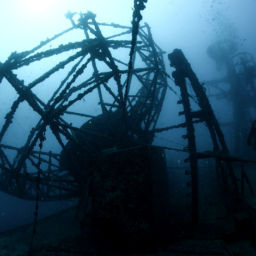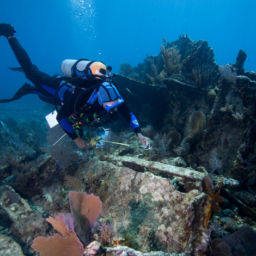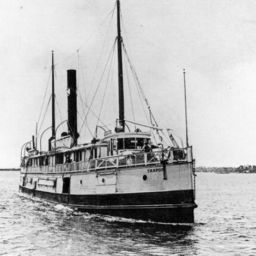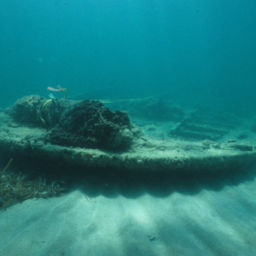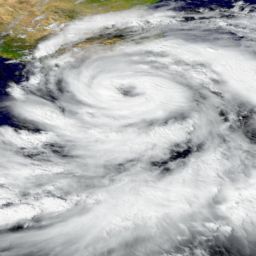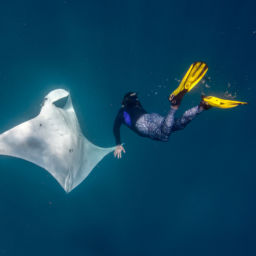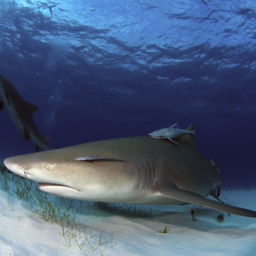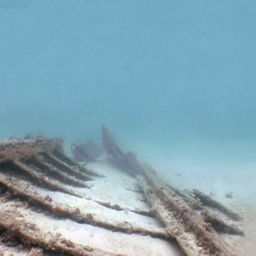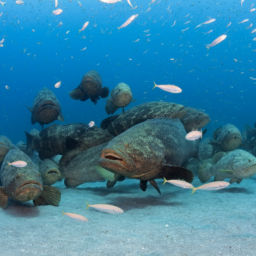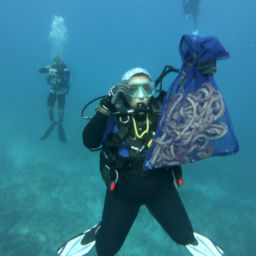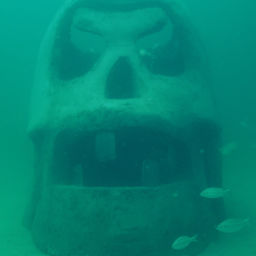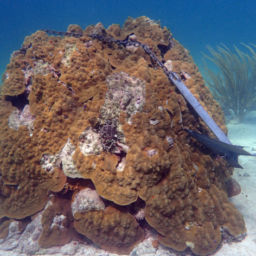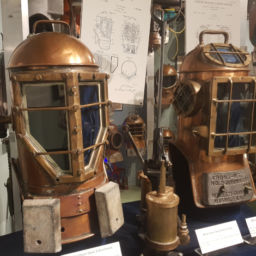Fort Lauderdale is not only a great destination for a beach vacation, but is also (somewhat surprisingly) a good choice for a dive trip. South Florida is home to the Southeast Florida Reef Tract, spanning the distance from south of Miami north to West Palm Beach. Three reefs run parallel to the coast, ranging in depth from 15 to 100 feet (4.5 to 30 m). If the reef doesn’t interest you — never fear. In the past few decades, the county sank 76 artificial reefs. This created the largest collection of warm-water wrecks in the United States. The best scuba diving in Fort Lauderdale encompasses shore dives, boat dives, drift dives, wreck dives, night dives and reef dives, offering the perfect variety to suit anyone.
Here are our top picks for the best scuba diving in Fort Lauderdale.
The Jay Scutti, Tracy, and Merci Jesus
This site is quite an unusual in that if the current is working in your favor, you can visit three wrecks on one dive. Most of the site is at 70 feet (21 m), with stakes in the sand between the wrecks to help you navigate. If the current is working correctly, you will coast from south to north. You’ll dive the Jay Scutti, a tugboat, first, followed by the Tracy, an oil rig, next. You’ll end with the Merci Jesus, seized by U.S. Customs officials in 1998 for drug running. Around these wrecks there is a great chance to see stingrays, schooling reef fish and the occasional goliath grouper.
Tenneco Towers
The Tenneco Oil Company sank five large sections of its oil-production platforms to create the largest artificial reef in southeast Florida. This dive is for advanced divers, with two of the platforms at 110 feet and one at 65 feet. Although it’s only been down since 1985, there is a massive growth of soft coral and hogfish, turtles and schools of fish make this site full of life.
Hammerhead Reef
Hammerhead Reef is a favorite for advanced divers, with depths varying from 60 to 90 feet (18 to 27 m). The reef is an excellent choice for coral lovers, offering a much wider variety of species than the shallower reefs. There is an abundance of lobsters, schools of fish, stingrays, parrotfish, and the occasional sea turtle or lionfish. The reef’s finger-like structure, full of organisms hiding in crevices, is excellent for underwater photography.
Jim Atria
An advanced dive, this wreck sits at a depth of 130 feet (40 m) in the sand, and 95 feet (29 m) at the wheelhouse. Originally called the Poinciana, the now-named Jim Atria was an old Dutch freighter that was sunk in 1987 as part of the artificial-reef program. It was renamed in honor of a local developer and diver, Jim Atria, who helped with the wreck’s sinking.
Although it was originally shallower, Hurricane Andrew moved the Jim Atria to a much deeper spot. With the proper training, this site offers great opportunities for penetration. It’s lovely from the outside as well, with vibrant soft-coral growth throughout the freighter. This wreck is home to spiny oysters, sea fans, hogfish, black grouper, squirrelfish, and baitfish, which bring in the occasional pelagic.
Barracuda Reef
One of the most popular reef drift dives in Fort Lauderdale, Barracuda Reef is suitable for beginners at depths between 20 and 35 feet (6 to 11 m). The reef’s beautiful ledge runs up to about 10 feet and offers protection for many reef fish. At this site, you can see schools of grunts, a wide variety of corals, lobsters, moray eels, nurse sharks, and turtles depending on the season. For a relaxing, easy drift dive, you can’t beat Barracuda Reef.
The Jax (Erojacks)
For a different experience, The Jaxx is one of the area’s best shore dives, located just a little south of Fort Lauderdale in Dania Beach. This dive site is a bit tricky, due to the long trek on land. Look for a little sign pointing toward a large collection of submerged five-foot-tall “jacks” (like the children’s toy), which span about 1,500 feet underwater. This shallow site only reaches a depth of 20 feet (6 m), but it’s incredibly full of marine life. The underwater structures are home to sea turtles, schools of grunts, parrotfish, stingrays, soft corals, and many nurse sharks. Don’t forget a dive flag, due to the heavy boat traffic off the Florida coast.
Hog Heaven
The Hog Heaven is one of the most commonly visited wrecks in the Fort Lauderdale area. This wreck sits in about 65 feet (20 m) of water, and looks a bit different than normal wrecks. While sinking this artificial reef in 1986, the 180-foot (55 m) barge accidentally flipped upside down. This dive site is excellent for Open Water divers, offering a manageable depth as well as a lot of marine life. Trained divers can easily penetrate the wreck, where you might spot a hiding hogfish or lionfish. Next to the wreck is the “jungle gym,” a mishmash of sunken debris, where you can find schools of fish, sea fans, and other tiny organisms hiding.
Mercedes
The remains of the Mercedes lie at a depth of 55 to 95 feet (17 to 29 m). On Thanksgiving Day 1984, the ship became unmoored and drifted toward the seawall of a luxurious Palm Beach mansion. The ship was purpose-sunk in 1985 as part of the artificial-reef program, but it too fell victim to Hurricane Andrew in 1992. Although the storm almost split the wreck in half, the bow is still intact. The rest of the ship is an excellent place to spot marine life such as the occasional goliath grouper, amberjacks, grunts, soft corals, lobsters, and other baitfish. While diving the Mercedes, it’s best to use nitrox for a longer bottom time.
Ebenezer II
The wreck of the Ebenezer II is a “newer” sunken freighter within the artificial reef program, sunk in 2002 in around 130 feet (40 m) of water. This wreck is definitely for the more experienced diver, with options for penetration. Although it is a newer wreck, it has already attracted a large contingent of marine life, with large populations of baitfish, grunts, parrotfish, lizardfish, and other reef fish.
The Caves
The Caves generally make an excellent second dive while on a boat trip, following the deeper wrecks nearby. This is another shallow section of the reef, covering depths of only 20 to 30 feet (6 to 9 m). This site is full of shallow caves within the reef ledge, providing homes for many sea creatures. The Caves is an excellent dive for novice divers, full of marine life.
By guest author Liz Maynor



